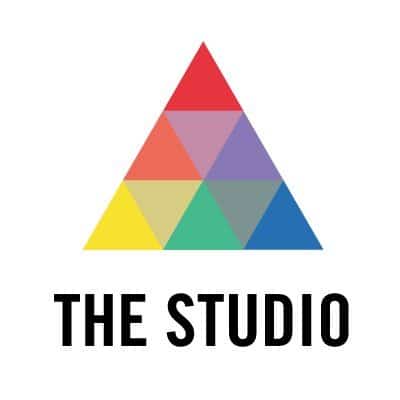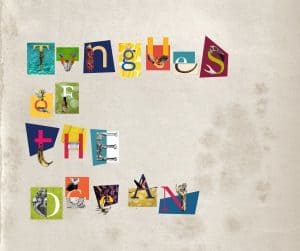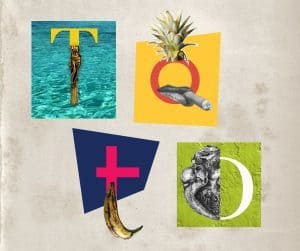With every new project, one thing will continue to be true: It will always take longer than you think. With my podcast plan in hand and weeks of summer before me, I thought at this point I would have a dozen episodes recorded and edited, a website up and running, and a launch date in sight for my podcast, tongues of the ocean. HA! Not even close.
In fairness, I have come a long way, since I started with almost no experience in audio recording and editing. Most of my time during the Digital Scholarship & Publishing Studio Fellowship has been spent writing scripts, getting comfortable with recording, experimenting with different recording and editing methods, and building a brand for the podcast. Considering that at the beginning of June I had nothing but a name and idea and goal, these are still big achievements for a humble Luddite.
In between sorting out the main challenges of audio recording and editing—which we will get to in a minute—I held weekly meetings with Cydne Coleby, a graphic designer based back home in The Bahamas who helped me to form the branding of the podcast. I’ve learned that having a good product is only half of the project—branding and distribution is the other half. When I launch, I want to make sure the visual presence of the podcast is strong, and that means building an engaging logo, website, and social media presence. Cydne helped me to re-brand my press, Poinciana Paper Press, a few years ago, and I was thrilled to work with her again.
I firmly believe that when one builds a brand in the Caribbean space, one must avoid the trap of nostalgia. There isn’t enough room in this blog post to provide an entire history of the problematic representation of Caribbean spaces. I’ll just say that when Cydne and I sat down to brainstorm, we stayed far away from steel pan drums. The Caribbean space is as brutal as it is beautiful—far more so for those who live there—and this duality is what drove our direction: bold colors, strong graphics that speak to Caribbean nationals rather than visitors, and a fragmented aesthetic that pays tribute to our myriad identities. I feel the final result matches the kind of podcast I saw myself creating: literary offerings from a region rich with vibrant stories about Caribbean realities.
Branding aside, the main problem I faced with this project is the same problem we have always faced as a region of creative individuals scattered across a series of isolated islands—how can we come together in the best way possible without actually physically relocating ourselves? In my case: how can I record my guests in clear, rich, and engaging sound, as if they were right there in the studio with me, instead of thousands of miles away, hunched over a computer microphone in a room with all the windows shut tight, praying the potcakes or parrots hold their tongues for a brief twenty minutes?
It took me the entire summer to face this answer: I can’t. Sure, I entertained several ideas—have them record on their mobile devices! Form partnerships with willing radio stations on each island! Mail a Zoom recorder island-to-island with instructions! Mail everyone a headset with a mic!—but they were all prohibitive due to the necessary investments of time, money, and energy. At the end of the day, I needed to design a project that I could sustain while earning my MFA and teaching, and this requires strict boundaries and clever time management. Additionally, I do not want to ask much of my guests, either—having them record themselves independently or take on the time and cost of receiving and mailing special recording equipment around the islands (notwithstanding the very real possibility of such equipment “getting lost” through customs) is asking too much. The show is not meant to be a burden, it is meant to be inspiring.
So once I faced that I couldn’t get it perfect (oh, the horror!), how could I make it work? I took some kind advice and instruction from Deborah Anzinger, who through her space, NLS Kingson, records the podcast “IN”, featuring conversations with visual art practitioners across the Caribbean. They use Google Hangouts to record interviews with artists who are not present in Jamaica to record with them, and it seems to work very well for them. So every week, I explored recording on Google Hangouts via a “go live” option on YouTube, making many errors and discovering many drawbacks, but ultimately finding it the best option for my podcast, too.
The second challenge came with editing. I figured that this was where the magic, if any, could happen. Perhaps through some clever tricks, I could lesson the disparity between my voice—recorded through the sweet mic set up that the University of Iowa provides in their podcast recording studio—and the voices of my guests, which came through over computer or phone mics. I hoped that I could edit on YouTube, but it turns out that YouTube, while providing what seems to be great video editing options, does not have much to offer by way of audio editing. You probably knew this was coming. But guys, I was really, really hoping YouTube would come through for me on this. I was dreading the daunting task of learning an entirely new audio editing program. But this is where the project took me, and if I am being honest, I think I knew deep down that I was going to have to get over this fear eventually to make a worthy podcast.
So I turned to the one person who had been giving me advice the whole summer as I explored this new territory: my brother, Liam, who is an audio engineer and music producer. Once the Fellowship was over and I went home to The Bahamas for a quick visit before the fall semester began, he sat down with me and gave me a crash course in the audio editing program, Studio One. Sure, that feels like I didn’t get to know the program as well as I could if I had, for example, earned an entire degree in audio engineering—but hey, considering my long journey with InDesign began ten years ago when a graphic designer gave me a five minute crash course and this semester finds me teaching a class on InDesign, there is potential to learn and get comfortable enough with the program over time that I make it work for my needs. Plus, Liam kindly offered to fine-tune each episode for me after I did what I could on my end, which is a major relief.
Then, as we worked on a particularly problematic file together, smoothing out its rough edges, I began to feel—could it be?—that the light at the end of a dark tunnel had arrived. I heard my voice come through—“Hello, and welcome to tongues of the ocean, a podcast for Caribbean Literary voices”— and heard my guest’s poems reverberate through the room, and felt like this project could finally be possible.
And the reason this is possible is because this summer fellowship with the Digital Scholarship & Publishing Studio gave me the motivation and means to finally roll my sleeves up and make this project a reality. It helped me to get real about my time, face my anxieties, and gave me the room to fail enough that I could eventually succeed. I am so grateful for how this fellowship has helped me to grow this summer—not only my skill set, but also my platforms for sharing Caribbean literature. I now see how pushing into the audio realm can support my physical and digital book publishing realms. I can’t wait to launch this podcast before the year is over!


